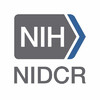
Thalidomide in Treating Anemia in Patients With Myelodysplastic Syndrome
LeukemiaMyelodysplastic Syndromes1 moreRATIONALE: Thalidomide may be an effective treatment for anemia caused by myelodysplastic syndrome. PURPOSE: Randomized phase II trial to study the effectiveness of thalidomide in treating anemia in patients who have myelodysplastic syndrome.

Chemotherapy and Bone Marrow Transplantation in Treating Patients Acute Myeloid With Leukemia or...
LeukemiaMyelodysplastic SyndromesRATIONALE: Drugs used in chemotherapy use different ways to stop cancer cells from dividing so they stop growing or die. Combining chemotherapy with bone marrow transplantation may allow the doctor to give higher doses of chemotherapy and kill more cancer cells. PURPOSE: Phase II trial to study the effectiveness of bone marrow transplantation following combination chemotherapy in treating patients with acute myeloid leukemia or myelodysplastic syndrome .

A Randomized Trial of Antithymocyte Globulin Versus Cyclosporine to Treat the Cytopenia of Myelodysplastic...
Hematologic DiseasesMyelodysplastic SyndromesApproximately 40% of the patients with myelodysplastic syndrome (MDS) die as a consequence of their cytopenia. As in aplastic anemia, the cytopenia of MDS may be partly due to cytotoxic T cell activity. Immunosuppressive therapy may therefore reverse the cytopenia. In a phase II pilot study of anti-thymocyte globin (ATG) to treat myelodysplastic syndrome (MDS); 41% of patients (61% of patients with refractory anemia) have responded in terms of transfusion independence. Recently, Jonasova et al [32] reported a 82% substantial hematological response rate in 18 patients with MDS of the refractory anemia (RA) subtype treated with cyclosporine alone. Just over 50% of the patients in this series had MDS of the hypocellular type. Cyclosporine alone if indeed efficacious would be a powerful therapeutic option that could be readily used by hematologists in the community to treat patients with MDS. This efficacy needs to be proven in a larger study which includes patients with the other subtypes of MDS and more patients with the non-hypocellular forms of MDS (which constitute approximately 70% of the cases in the community). As MDS is a heterogeneous group of disorders, a randomized comparison with the other immunomodulating intervention of proven benefit, ATG, is appropriate. In this randomized study patients with MDS will receive either ATG alone or cyclosporine alone.

Thalidomide to Treat Oral Lesions in HIV-Infected Patients
Acquired Immunodeficiency SyndromeBurning Mouth Syndrome1 moreThis study will test the effectiveness of topical thalidomide in healing mouth sores in HIV infected patients. Oral (PO) thalidomide heals these sores at a dose of 200 mg per day. However, PO thalidomide can cause drowsiness, skin rashes, allergic reactions, increased viral load, and even nerve damage that may not be reversible. This study will evaluate the efficacy of a topical formulation of thalidomide (placed directly on the surface of the sore) for the healing of these sores. Persons with HIV infection of acquired immunodeficiency of at least 18 years of age with one or more chronic, painful intraoral lesions may be eligible for this study. Subjects must be referred by a primary care physician who is managing their care, and must have HIV/AIDS status confirmed. Patients' HIV treatment regimen will not be altered and those receiving highly active therapy will not be excluded. Patients will be excluded if they are concurrently being treated for mucosal lesions (including topical or systemic steroids, viscous lidocaine, topical or systemic anti-fungals, or mouthwashes), or concurrent thalidomide therapy; receving chemotherapy or radiation therapy for neoplasms; using concurrent acute therapy for opportunistic infections; concurrent use of sedatives (such as CNS depressants or alcohol use); history of allergy to thalidomide; pre-existing peripheral neuropathy of grade II or higher; pregnant or lactating females or those not practicing contraception according to FDA guidelines for thalidomide.

Combination Chemotherapy in Patients With Zollinger-Ellison Syndrome and Tumors of the Pancreas...
Islet Cell AdenomaNeoplasm Metastasis1 morePatients with Zollinger-Ellison Syndrome suffer from ulcers of the upper gastrointestinal tract, higher than normal levels of gastric acid, and tumors of the pancreas known as non-beta islet cell tumors. Prior to the use of drugs to cure the ulcers, patients typically died due to severe ulcers. Because of such effective drugs to treat the ulcers it is more common to see patients dying due to the pancreatic tumors. The study will observe patients suffering from Zollinger-Ellison Syndrome and non-beta islet cell tumors and determine the effectiveness of combined chemotherapy with streptozotocin, 5-fluorouracil, and doxorubicin.

Acupuncture for Carpal Tunnel Syndrome
Carpal Tunnel SyndromeThis study will look at the effectiveness of acupuncture for treating carpal tunnel syndrome (CTS). People who participate in this study will have CTS that has been diagnosed by physical examination and neurological testing. We will randomly assign study participants to receive one of the three types of acupuncture either once, twice, or three times weekly for a total of 6 weeks. Acupuncturists will treat one group of patients with true acupuncture. They will give the other two groups of patients one of two alternative acupuncture treatments that do not use the true acupuncture points. The patients and evaluators will not know the type of acupuncture (True, Alternative 1, or Alternative 2) that is being used. The acupuncturists will not communicate with the patients and will not be involved in patient evaluation.

Kinesio Taping Technique Versus Virtual Reality in Patients With Chronic Shoulder Impingement Syndrome...
Impingement SyndromeShoulderPurpose of the Study: to compare between the effect of kinesio taping technique versus virtual reality technique in rehabilitation of patients with chronic shoulder impingement syndrome.

Correlation of Insulin Resistance With Hormonal and Ovarian Morphological Characteristics in Patients...
Study the Relationship Between Insulin Resistance With Hormonal and Ovarian Morphological Characteristics in Patients With Polycystic Ovarian SyndromeWe designed a study to determine if ovarian volume (OV) and/or follicle number (FN) are independently associated with abnormal metabolic findings in women diagnosed with PCOS. We hypothesized that ovarian morphology but not follicle number would be associated with a significantly higher odds of hyperinsulinemia among women with PCOS.

Effect of Aerobic Exercise on Diurnal Cortisol Pattern in Premenstrual Syndrome
Premenstrual SyndromeThe aim of this study will be to investigate the effect of aerobic exercise on diurnal cortisol pattern in premenstrual syndrome.

Effects of Proprioceptive Neuromuscular Training on Sensory and Motor Function in Guillain Barre...
Guillain-Barre SyndromeThis study aims to determine the effects of Proprioceptive Neuromuscular Training on Sensory versus Motor Function in patients presenting with Guillain Barre Syndrome.
